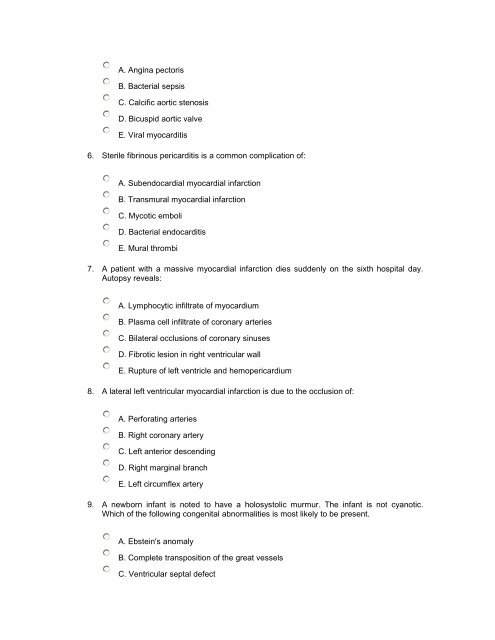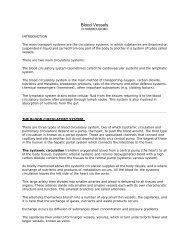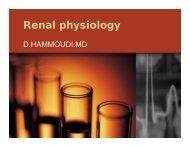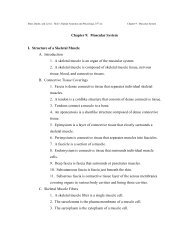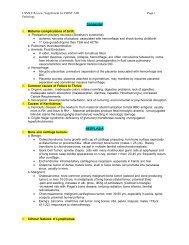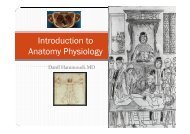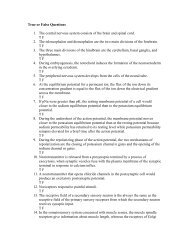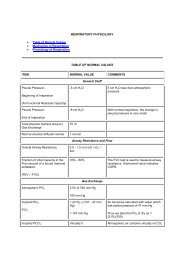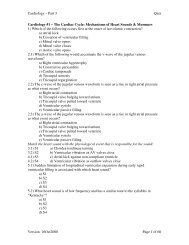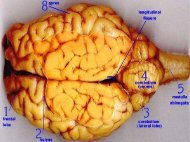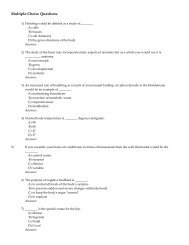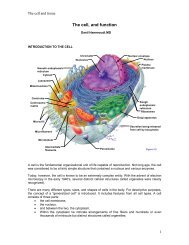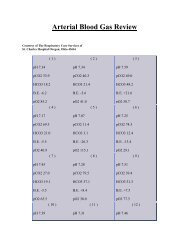L:\usmle review 7 - Sinoe medical homepage.
L:\usmle review 7 - Sinoe medical homepage.
L:\usmle review 7 - Sinoe medical homepage.
Create successful ePaper yourself
Turn your PDF publications into a flip-book with our unique Google optimized e-Paper software.
A. Angina pectoris<br />
B. Bacterial sepsis<br />
C. Calcific aortic stenosis<br />
D. Bicuspid aortic valve<br />
E. Viral myocarditis<br />
6. Sterile fibrinous pericarditis is a common complication of:<br />
<br />
<br />
<br />
<br />
<br />
A. Subendocardial myocardial infarction<br />
B. Transmural myocardial infarction<br />
C. Mycotic emboli<br />
D. Bacterial endocarditis<br />
E. Mural thrombi<br />
7. A patient with a massive myocardial infarction dies suddenly on the sixth hospital day.<br />
Autopsy reveals:<br />
<br />
<br />
<br />
<br />
<br />
A. Lymphocytic infiltrate of myocardium<br />
B. Plasma cell infiltrate of coronary arteries<br />
C. Bilateral occlusions of coronary sinuses<br />
D. Fibrotic lesion in right ventricular wall<br />
E. Rupture of left ventricle and hemopericardium<br />
8. A lateral left ventricular myocardial infarction is due to the occlusion of:<br />
<br />
<br />
<br />
<br />
<br />
A. Perforating arteries<br />
B. Right coronary artery<br />
C. Left anterior descending<br />
D. Right marginal branch<br />
E. Left circumflex artery<br />
9. A newborn infant is noted to have a holosystolic murmur. The infant is not cyanotic.<br />
Which of the following congenital abnormalities is most likely to be present.<br />
<br />
<br />
<br />
A. Ebstein's anomaly<br />
B. Complete transposition of the great vessels<br />
C. Ventricular septal defect


